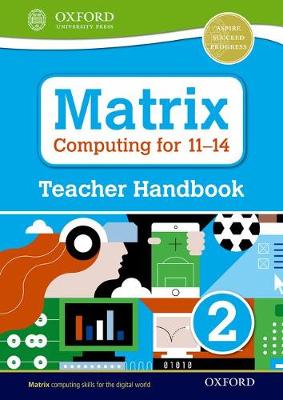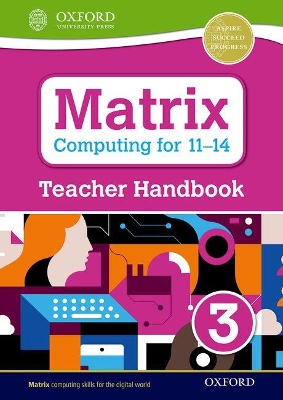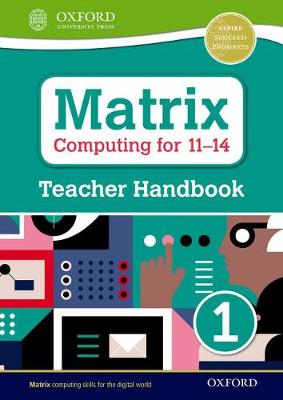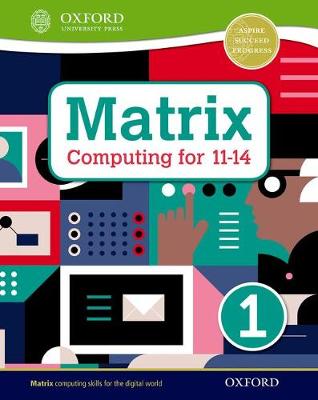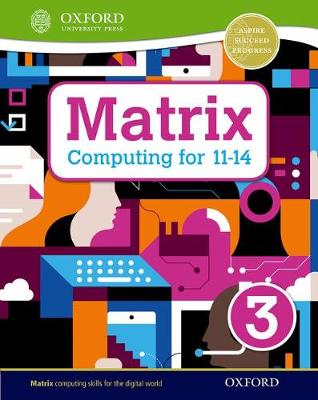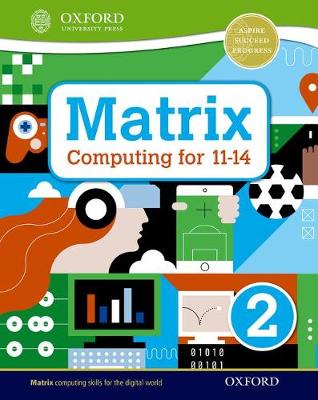Matrix Computing for 11-14
6 total works
Delivering the new KS3 National Curriculum for Computing, equipping students to use creative computational thinking, preparing them for GCSE and the digital world beyond. This Teacher Handbook includes full curriculum coverage with Programme of Study and CAS objectives listed for each chapter, differentiated activities and learning outcomes for different abilities, lesson overviews and model answers to practice questions. Also includes preparation for using the
programming languages App Inventor and Python.
programming languages App Inventor and Python.
Delivering the new KS3 National Curriculum for Computing, equipping students to use creative computational thinking, preparing them for GCSE and the digital world beyond. This Teacher Handbook includes full curriculum coverage with Programme of Study and CAS objectives listed for each chapter, differentiated activities and learning outcomes for different abilities, lesson overviews and model answers to practice questions. Also includes preparation for using the
programming languages App Inventor and Python.
programming languages App Inventor and Python.
Delivering the new KS3 National Curriculum for Computing, equipping students to use creative computational thinking, preparing them for GCSE and the digital world beyond. This Teacher Handbook includes full curriculum coverage with Programme of Study and CAS objectives listed for each chapter, differentiated activities and learning outcomes for different abilities, lesson overviews and model answers to practice questions.
Matrix Computing for 11-14: Student Book 1
by Alison Page, Diane Levine, Areti Bizior, and Steve Bunce
Published 27 April 2017
Delivering the new KS3 National Curriculum for Computing, equipping students to use creative computational thinking, preparing them for GCSE and the digital world beyond.
A creative, project-based approach to learning, solving real-life problems
Clear structure allowing progression with each topic
Focus on introducing important computational vocabulary
Accessible for a wide range of abilities
Differentiated questions for support and extension
A creative, project-based approach to learning, solving real-life problems
Clear structure allowing progression with each topic
Focus on introducing important computational vocabulary
Accessible for a wide range of abilities
Differentiated questions for support and extension
Matrix Computing for 11-14: Student Book 3
by Alison Page, Diane Levine, Areti Bizior, and Steve Bunce
Published 27 April 2017
Delivering the new KS3 National Curriculum for Computing, equipping students to use creative computational thinking, preparing them for GCSE and the digital world beyond.
A creative, project-based approach to learning, solving real-life problems
Clear structure allowing progression with each topic
Focus on introducing important computational vocabulary
Accessible for a wide range of abilities
Differentiated questions for support and extension
A creative, project-based approach to learning, solving real-life problems
Clear structure allowing progression with each topic
Focus on introducing important computational vocabulary
Accessible for a wide range of abilities
Differentiated questions for support and extension
Matrix Computing for 11-14: Student Book 2
by Alison Page, Diane Levine, Areti Bizior, and Steve Bunce
Published 27 April 2017
Delivering the new KS3 National Curriculum for Computing, equipping students to use creative computational thinking, preparing them for GCSE and the digital world beyond.
A creative, project-based approach to learning, solving real-life problems
Clear structure allowing progression with each topic
Focus on introducing important computational vocabulary
Accessible for a wide range of abilities
Differentiated questions for support and extension
A creative, project-based approach to learning, solving real-life problems
Clear structure allowing progression with each topic
Focus on introducing important computational vocabulary
Accessible for a wide range of abilities
Differentiated questions for support and extension
